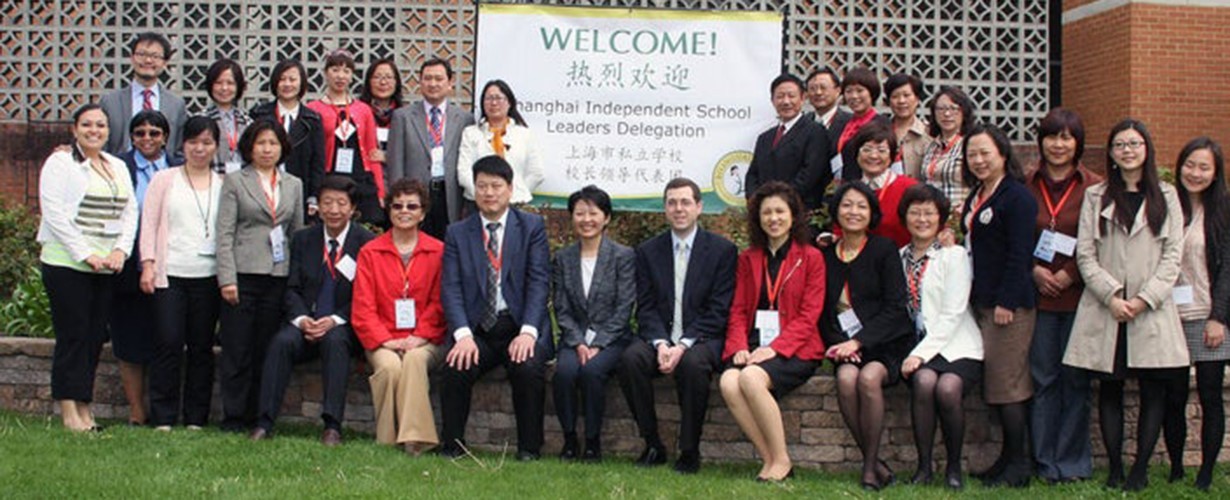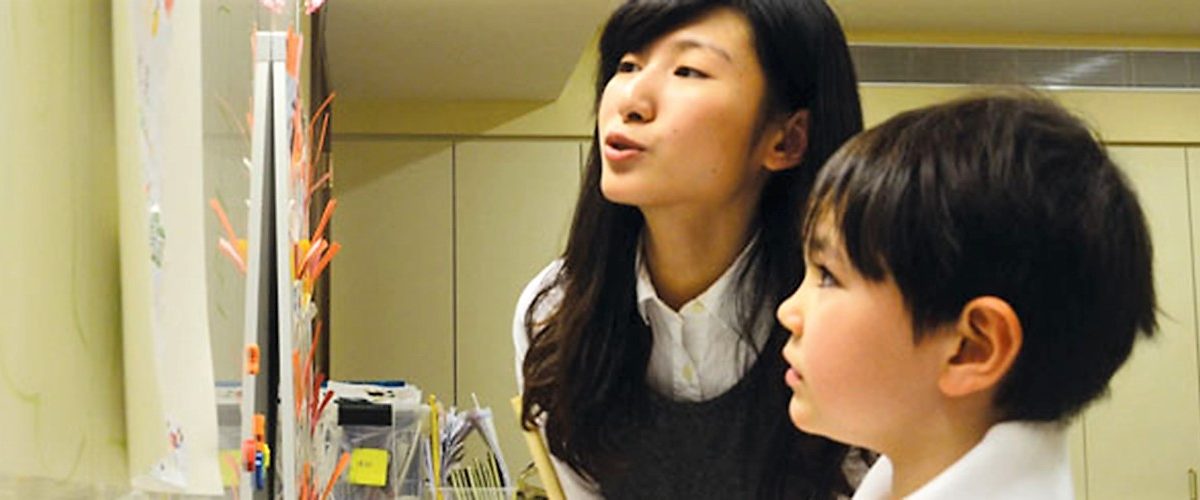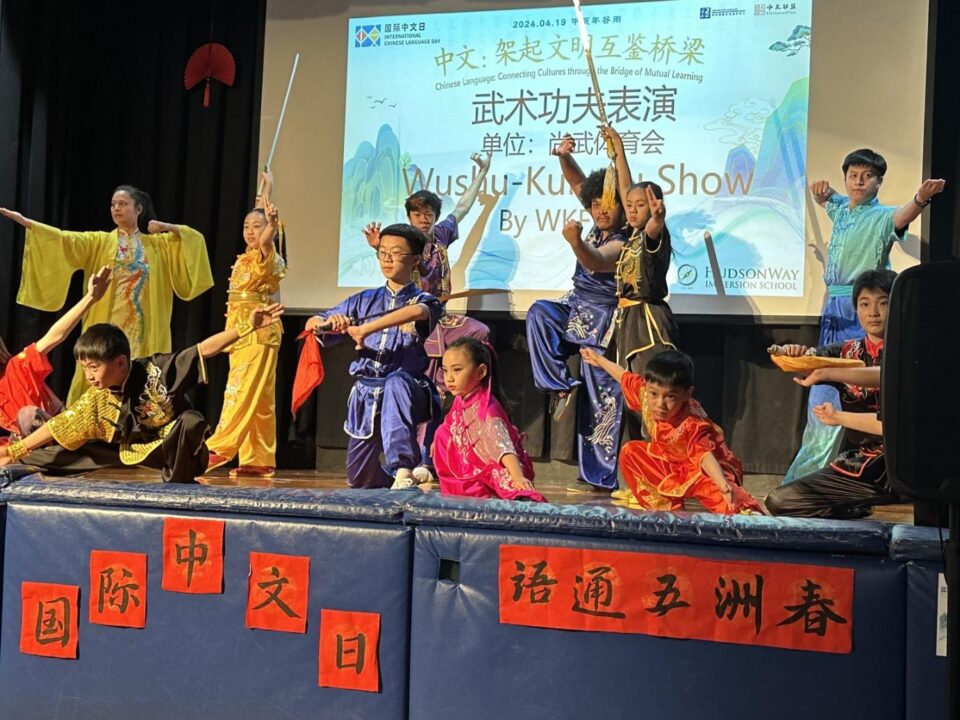
Bilingual Buds Welcomes Educators from Shanghai
May 22, 2013
Children Perform “Ballad of Mulan” in New York City
March 9, 2015By William Hennelly(China Daily USA)
Facebook founder Mark Zuckerberg addressed a Beijing audience in Mandarin last month. He has been studying a language spoken by 1.3 billion Chinese, and he's not alone. The study of Mandarin in the US is booming, WILLIAM HENNELLY reports from New York.
The pupils in teacher Zhang Shanshan's class at the Hudson Way Immersion School were asked what they needed to do to get more smiley faces on an assignment.
"Ting lao shi (listen to the teacher)," the mostly 4- to 5-year-olds answered uniformly in Mandarin with hardly any foreign accent.
Soon the class began to get noisy. Sensing this, the teacher asked if she should erase some smiley faces off the blackboard, making the lesson longer.
"Bu" (no), the children replied.
"When I first taught this class, they didn't understand what the Chinese storybook was about," Zhang said. "But after two or three months, they can read many of the characters in it."
"By the time they are 9 or 10, if they turn their backs, you can't tell" whether they are native Chinese or not when speaking, said Elizabeth Willaum, a veteran language-immersion expert and director of Hudson Way. "Learning Chinese isn't just about marketability," she said. "When you learn a language, the culture opens to you."
Be it at the private Hudson Way school on Manhattan's Upper West Side or at public schools in Kentucky, Indiana and other states, the study of Mandarin in the United States is booming. In some cases, it is replacing Spanish, French or other languages that have long been more popular in US schools.
"We see a bump in enrollment in the languages of the countries that we see as economic competitors," said Marty Abbott, executive director of the American Council on the Teaching of Foreign Languages (ACTFL) in Alexandria, Virginia.
"In the 1980s, we definitely experienced a surge in Japanese programs," Abbott told China Daily. "I think we're seeing something similar happen with the increased interest in Chinese programs. It reflects China's economic growth, and it's being seen as the economic power to compete with."
Over at Avenues: The World School in Manhattan's Chelsea section more than 300 students from nursery school to grade 3 are enrolled in an alternate-day Mandarin immersion program. The private school has close to 40 Mandarin teachers.
Founded by noted educators and media professionals Chris Whittle, Benno Schmidt and Alan Greenberg, Avenues opened in 2012 with 740 students. It now has 1,270 students from nursery school to grade 12, with plans for schools in 20 "world" cities, including Beijing, Shanghai and Hong Kong.
Chinese an 'essential' language
"Chinese is an essential language of the 21st century world," said Sarah Bayne, global director of Education Design at Avenues. "We are opening one of our world schools in Beijing in 2016, because we recognize the critical importance of China and our relationships there.
"Our model is based on the fact that most of our students come from English-speaking households, so they are all learning Chinese as a second language," she said.
The Internet abounds with stories of increasing demand for Chinese language instruction, and it's not only happening at affluent private schools.
In Louisville, Kentucky, the Hite Elementary School dropped its Spanish classes and switched to Chinese at the beginning of the school year for pupils in grades K-5. The school cited the Chinese counting system as more conducive to learning mathematics, a subject in which Chinese pupils outscore their Western peers on tests.
Minneapolis, Minnesota, has a publicly funded Chinese immersion charter school. The Yinghua School (Yinghua means English-Chinese in Mandarin) was featured in an Oct 26 New York Times article.
In Los Angeles, Yoyo Chinese, a video-centered online Mandarin instructional program, announced on Oct 30 that 7 million lessons have been taken on its website.
"Chinese students learn English in high school, read English literature, watch American television programs, and immerse themselves in American culture," saidYangyang Cheng, founder and CEO of Yoyo Chinese, in a press release."On the other hand, how much do Americans know about China? English speakers learning Chinese have recognized this knowledge gap prevents them from accessing a large percent of the world's population, as well as an entire reservoir of knowledge contained within 5,000 years of history."
In New York City during the 2013-2014 school year, 10,583 students took Chinese language courses across 69 middle and high schools, according to Will Mantell, a spokesman for the city's public schools. That includes both Mandarin and Cantonese courses and Chinese-language instruction for students who are studying it as a foreign language, as well as students whose home language is Chinese.
"Part of our Chinese-language instruction is in bilingual programs that strengthen English language learners' native language development and content knowledge while they build their social and academic English skills," he wrote in an e-mail to China Daily. The bilingual programs may also include non-language courses taught in Chinese, for example, math taught in Mandarin.
New York had 41 Chinese bilingual programs in the 2013-2014 school year - 20 were in elementary schools, 18 in high schools and three in middle schools. Of the bilingual programs, 17 were in Brooklyn, while Manhattan and Queens had 12 apiece.
Facebook founder Mark Zuckerberg addressed a Beijing audience in Mandarin last month. He has been studying a language spoken by 1.3 billion Chinese, and he's not alone. The study of Mandarin in the US is booming, WILLIAM HENNELLY reports from New York.
The pupils in teacher Zhang Shanshan's class at the Hudson Way Immersion School were asked what they needed to do to get more smiley faces on an assignment.
"Ting lao shi (listen to the teacher)," the mostly 4- to 5-year-olds answered uniformly in Mandarin with hardly any foreign accent.
Soon the class began to get noisy. Sensing this, the teacher asked if she should erase some smiley faces off the blackboard, making the lesson longer.
"Bu" (no), the children replied.
"When I first taught this class, they didn't understand what the Chinese storybook was about," Zhang said. "But after two or three months, they can read many of the characters in it."
"By the time they are 9 or 10, if they turn their backs, you can't tell" whether they are native Chinese or not when speaking, said Elizabeth Willaum, a veteran language-immersion expert and director of Hudson Way. "Learning Chinese isn't just about marketability," she said. "When you learn a language, the culture opens to you."
Be it at the private Hudson Way school on Manhattan's Upper West Side or at public schools in Kentucky, Indiana and other states, the study of Mandarin in the United States is booming. In some cases, it is replacing Spanish, French or other languages that have long been more popular in US schools.
"We see a bump in enrollment in the languages of the countries that we see as economic competitors," said Marty Abbott, executive director of the American Council on the Teaching of Foreign Languages (ACTFL) in Alexandria, Virginia.
"In the 1980s, we definitely experienced a surge in Japanese programs," Abbott told China Daily. "I think we're seeing something similar happen with the increased interest in Chinese programs. It reflects China's economic growth, and it's being seen as the economic power to compete with."
Over at Avenues: The World School in Manhattan's Chelsea section more than 300 students from nursery school to grade 3 are enrolled in an alternate-day Mandarin immersion program. The private school has close to 40 Mandarin teachers.
Founded by noted educators and media professionals Chris Whittle, Benno Schmidt and Alan Greenberg, Avenues opened in 2012 with 740 students. It now has 1,270 students from nursery school to grade 12, with plans for schools in 20 "world" cities, including Beijing, Shanghai and Hong Kong.
Chinese an 'essential' language
"Chinese is an essential language of the 21st century world," said Sarah Bayne, global director of Education Design at Avenues. "We are opening one of our world schools in Beijing in 2016, because we recognize the critical importance of China and our relationships there.
"Our model is based on the fact that most of our students come from English-speaking households, so they are all learning Chinese as a second language," she said.
The Internet abounds with stories of increasing demand for Chinese language instruction, and it's not only happening at affluent private schools.
In Louisville, Kentucky, the Hite Elementary School dropped its Spanish classes and switched to Chinese at the beginning of the school year for pupils in grades K-5. The school cited the Chinese counting system as more conducive to learning mathematics, a subject in which Chinese pupils outscore their Western peers on tests.
Minneapolis, Minnesota, has a publicly funded Chinese immersion charter school. The Yinghua School (Yinghua means English-Chinese in Mandarin) was featured in an Oct 26 New York Times article.
In Los Angeles, Yoyo Chinese, a video-centered online Mandarin instructional program, announced on Oct 30 that 7 million lessons have been taken on its website.
"Chinese students learn English in high school, read English literature, watch American television programs, and immerse themselves in American culture," saidYangyang Cheng, founder and CEO of Yoyo Chinese, in a press release."On the other hand, how much do Americans know about China? English speakers learning Chinese have recognized this knowledge gap prevents them from accessing a large percent of the world's population, as well as an entire reservoir of knowledge contained within 5,000 years of history."
In New York City during the 2013-2014 school year, 10,583 students took Chinese language courses across 69 middle and high schools, according to Will Mantell, a spokesman for the city's public schools. That includes both Mandarin and Cantonese courses and Chinese-language instruction for students who are studying it as a foreign language, as well as students whose home language is Chinese.
"Part of our Chinese-language instruction is in bilingual programs that strengthen English language learners' native language development and content knowledge while they build their social and academic English skills," he wrote in an e-mail to China Daily. The bilingual programs may also include non-language courses taught in Chinese, for example, math taught in Mandarin.
New York had 41 Chinese bilingual programs in the 2013-2014 school year - 20 were in elementary schools, 18 in high schools and three in middle schools. Of the bilingual programs, 17 were in Brooklyn, while Manhattan and Queens had 12 apiece.





